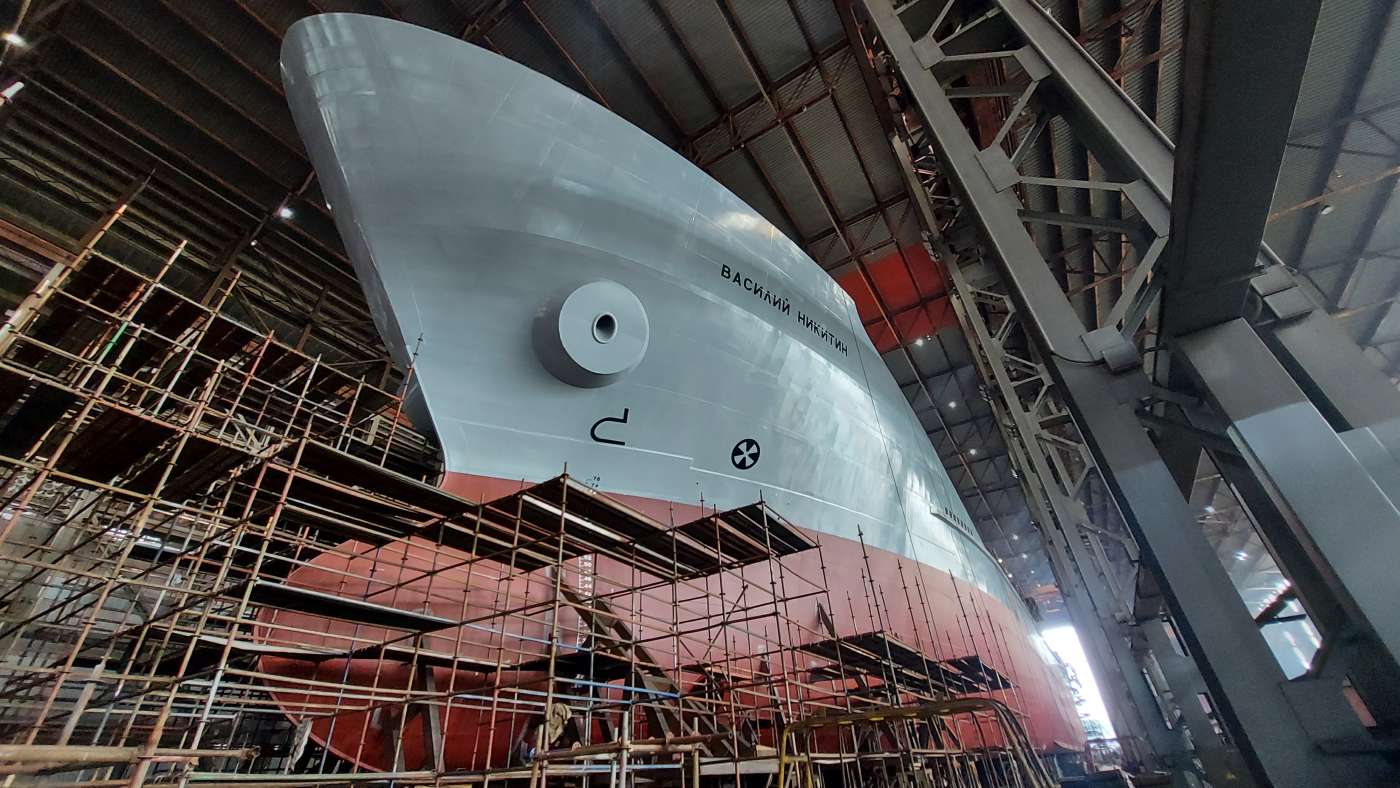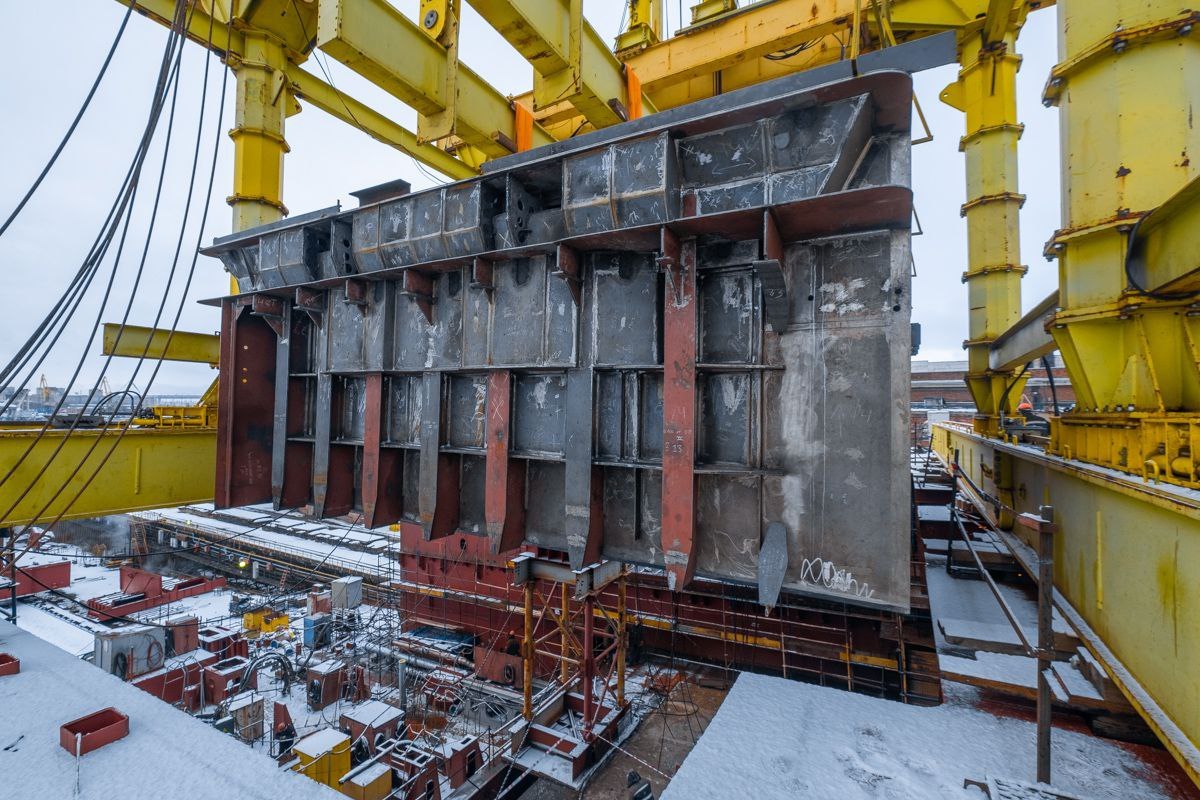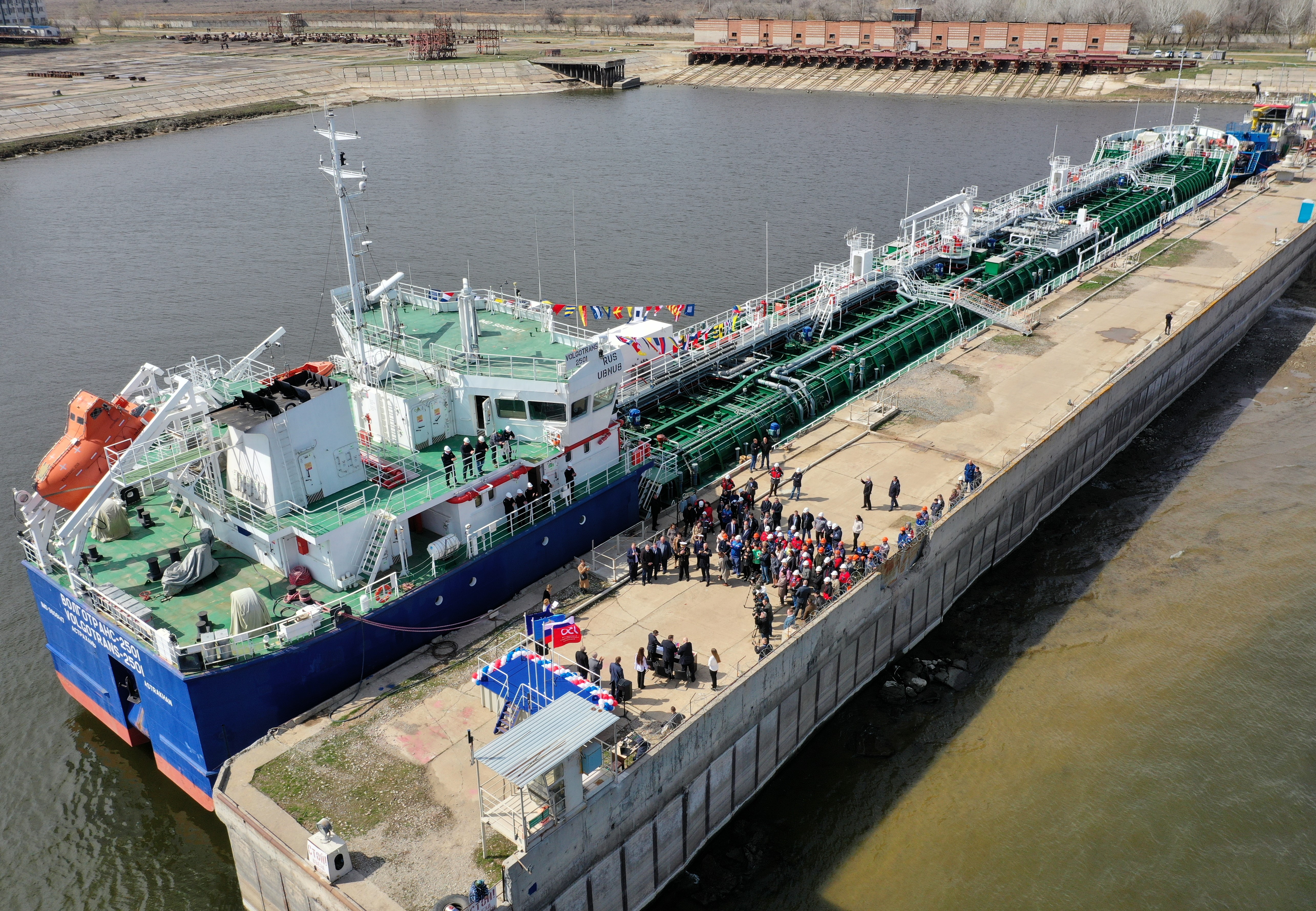
The priorities of Russian shipbuilding development amid the current geopolitical and economic situation are being revised. The key problem of the industry- providing shipbuilding and ship repair enterprises with ship components is being solved simultaneously. These tasks, which are currently being solved by the Russian authorities and the shipbuilding business, are in tune with the key theme of the St. Petersburg International Economic Forum - “Sovereign development is the basis of a just world. Let's join forces for the sake of the future generations."
“In 2022, Russian shipyards were building 367 ships including 117 civil ships delivered to the customers”
The recent year offered a serious test of strength for the domestic economy, including the shipbuilding industry. According to the data provided to IAA PortNews by the Russian Maritime Register of Shipping (RS) and the Russian Classification Society (RSC, formerly the Russian River Register), Russian shipyards were building 367 ships in 2022 including 225 units under the technical supervision of RS and 142 units supervised by RSC. Over the past year, domestic shipyards delivered 117 vessels to customers, including 35 seagoing vessels (RS) and 82 floating facilities (RSC), 31 of which are self-propelled vessels for inland waterways.
To compare it with the previous year: 406 vessels were under construction (145 river-going and 261 sea-going vessel). In 2021, Russian shipyards built and delivered 89 ships including 50 units for inland water ways and 39 units of RS class. In 2020, 116 ships were delivered to customers.
Under high tension

deficit of ship components. Image source: spb.mobionic.ru
In absolute figures, the performance of shipbuilders last year looks quite stable. However, the conditions under which the orders were implemented were invigorating and, admittedly, remain very tense, especially for the plant's departments for procurement and supply of ship components, as well as for designers. It is no secret that the dependence of domestic shipbuilding and ship repair on foreign components (mostly Western ones) had been very high for decades. Therefore, the sanctions have caused one of the key problems in shipbuilding – deficit of components for ships under construction. Shipbuilders had to redesign ships to replace unavailable imported components with Russian ones or those from friendly countries, primarily China. This led to an increase in construction cost and to postponement of deliveries, as well as to the deterioration of the shipyards’ financial and economic results.
“New types of domestically produced crucial ship equipment to enter the market in 2025–2026”
As Aleksey Rakhmanov, General Director of United Shipbuilding Corporation (USC), said in February 2023 at the meeting of the Federation Council Committee on Economic Policy, RUB 11 billion had been spent for foreign equipment and components not supplied to Russia. A compensation from the budget is under consideration.
“A decision has been made on the need to return the money lost in hostile jurisdictions. There are cases when we paid, but saw no products, deliveries, or start-up services,” Alexey Rakhmanov explained.
It should be recognized that the federal authorities immediately addressed the problems of providing ship components to shipbuilders. The focus is on creating conditions for accelerated import substitution.
Last year, the Ministry of Industry and Trade of Russia, together with interested organizations, identified the most critical items of ship equipment subject to priority replacement, and launched the mechanism to subsidize Russian organizations’ development and production projects. The subsidy is provided to stimulate the companies’ activities towards the development of ship components as part of a comprehensive project, taking into account the modernization of production, its adjustment to the requirements of certain markets, the production and sale of the products. It is planned to cover up to 80% of R&D expenses. A competition for a subsidy is held by RF Ministry of Industry and Trade twice a year. The scope of financing totaled RUB 7 billion in 2022, and will make RUB 14 billion in 2023 and RUB 1 billion in 2024.
“It is only possible to develop the production of components for ship repair in conjunction with the development of shipbuilding and all related industries”
“In 2022, agreements on providing the subsidies were concluded by the Ministry of Industry and Trade with 32 enterprises for 64 types of equipment for a total amount of about RUB 3.4 billion. With the implementation of complex projects, new types of critical ship equipment will be introduced to the domestic market starting from 2025-2026,” Victor Yevtukhov, State Secretary – Deputy Minister of Industry and Trade of the Russian Federation, said at the meeting of RF Government’s Marine Board held in May.
According to him, some Russian companies are already producing medium-speed and high-speed engines. “It should also be noted that there are no difficulties with general ship equipment today, it has long been produced by Russian companies at a good competitive level,” Viktor Yevtukhov said.
As the Ministry of Industry and Trade of the Russian Federation told IAA PortNews, RUB 15 billion are foreseen as subsidies for implementation of comprehensive projects on development, creation and launching of serial production of ship equipment in 2023вАТ2024.
Notably, the problems in domestic ship repair are the same as those of shipbuilders: state support is also required as well as a comprehensive solution to the issues of providing the industry with components and spare parts. It is only possible to develop the production of components for ship repair in conjunction with the development of shipbuilding and all related industries.
While the industry deploys facilities for production of goods required by shipbuilders, the Russian authorities will continue to develop interaction with suppliers of components from friendly countries over the coming two or three years. “Of course, we need to create groundwork for future projects. Last year, the government provided a subsidy for the development of components production. Already implemented and planned measures should ensure the entry of critical products to the market from 2025. From that moment, it is necessary to actively use the supplies from the friendly countries. Our goal is an accelerated transfer of the entire production cycle to the scientific and industrial base of Russia," said Denis Manturov, Minister of Industry and Trade.
Focus on cargo fleet

To meet the needs of Russia’s economy amid sanctions and the rejection of Western operators to work with Russia, it became necessary to revise the plans on construction of civil ships. Until 2022, Russia's need for new ships until 2035 was estimated at about 1,000 units but it increased to 1,500 units by the end of the year.
“In the framework of the project leasing, some 150 tankers, grain carriers, container ships, barges, tugs and dry cargo carriers including Arctic class ones are to be built in Russia by 2027”
In April 2023, the Ministry of Industry and Trade updated the shipbuilding plan until 2035 having returned to the initial level - 985 vessels including 60 large ones and 93 mid-size ones. As for the plan for 2023, the Ministry expects the completion and delivery of about 100 vessels of various types.
The plans for construction of civil ships in the coming five years involving the National Wealth Fund have also been updated. In February 2023, RF Government prepared passports of investment projects for modernization of air and water transport. RUB 136 billion will be allocated for the construction of sea and river going ships between 2023 and 2027. That will let domestic shipping companies get 260 civil ships within the coming 6 years including 119 cargo ships, 73 passenger ships, 27 ships of the dredging flee, 1 floating dock, 5 large and 5 towing ships, 20 barges.
Total investments are estimated at RUB 231 billion including RUB 136 billion from the National Wealth Fund. The ships are to be ordered by State Transport Leasing Company which is to lease out the new ships to transport companies for up to 25 years with the annual rate of 2.93% for passenger and cruise ships, 4.51% - for dredging and fishing ships, 7.6% - for freight carriers and large ships. The first 47 vessels will be contracted by GTLK in 2023.
In April 2023, the Minister of Industry and Trade elaborated on the plans for construction of ships in the framework of preferential leasing programme. “One more focus amid sanctions is on cargo ships of various purposes and deadweight. In the framework of the project leasing, some 150 tankers, grain carriers, container ships, barges, tugs and dry cargo carriers including Arctic class ones are to be built in Russia by 2027,” said the Minister. According to him, the new fleet will facilitate the redirection of export flows.

The Minister also said that this programme would also ensure further development of passenger fleet. The construction programme numbers 70 comfortable modern hydrofoils, electricity-powered river ships and cruise catamarans. “We have built up our competence essentially in this segment. Our ships sail along the Coast of the Krasnodar Territory and Crimea, on Volga and Ob, and connect hard to reach areas of the Far North,” said the official.
The Minister also spoke of the year-round shipping on the Northern Sea Route (NSR) having reminded about the delivery of three nuclear-powered icebreakers between 2020 and 2022. The Yakutia will be delivered next year, the Chukotka – in 2026. Two more units have been contracted and the construction of nuclear-powered icebreaker Rossiya of Project 10510 continues.
The last thing is to determine where those ships are to be to built. While there are practically no problems with the production facilities able to build mid-size ships of sea, river and mixed river/sea class, the capability of domestic shipyards for construction of large ships are very limited. As of today, only Far Eastern shipyard Zvezda is capable of building such ships today. Dry dock of Severnaya Verf shipyard is not to be delivered before 2023. The third shipyard of that kind can appear on the Kotlin island (Saint-Petersburg), according to earlier statements of Rosatom.
In this regard, Russian authorities are ready to ease some requirements. At the end of May 2023, Russian President Vladimir Putin allowed the possibility of purchasing foreign ships for the needs of the Russian economy. “We need incentive measures that would let purchase not only Russian, but also, I think, even foreign ships. However, we certainly need to focus first of all on Russian manufacturers,” said the President at the meeting with members of Delovaya Rossiya National Public Organisation (Business Russia).
Apart from leasing
Of course, preferential leasing programme is an efficient and popular financial instrument to stimulate the development of shipbuilding. Meanwhile other state support mechanisms are being applied in Russia. The Ministry of Industry and Trade of the Russian Federation foresees the allocation of RUB 36 billion as state support of civil shipbuilding in 2023-2025, the Ministry told IAA PortNews.
“The Ministry of Industry and Trade of the Russian Federation foresees the allocation of RUB 36 billion as state support of civil shipbuilding in 2023-2025”
The key measures of state support are subsidies to partially cover interest rates on loans, leasing payments and installment payments for acquisition of civil ships; subsidies to partially cover expenses for acquisition (construction) of new civil ships in return for scrapped ships; subsidies to partially cover expenses for construction of large ship, fishing ships and crab catchers at the shipyards of the Far East Federal District.
More about Russian shipbuilding is in IAA PortNews’ annual analytical report “Shipbuilding in Russia” >>>>
More industry-related content is available on our social media pages: YouTube, Telegram, Yandex Zen




